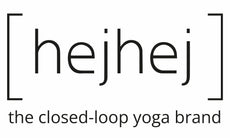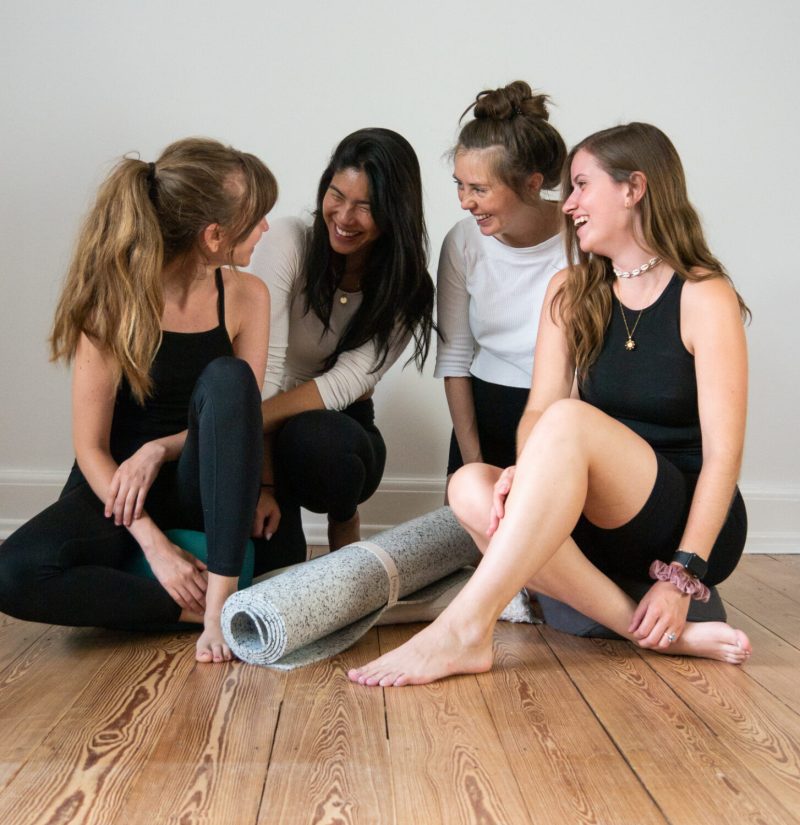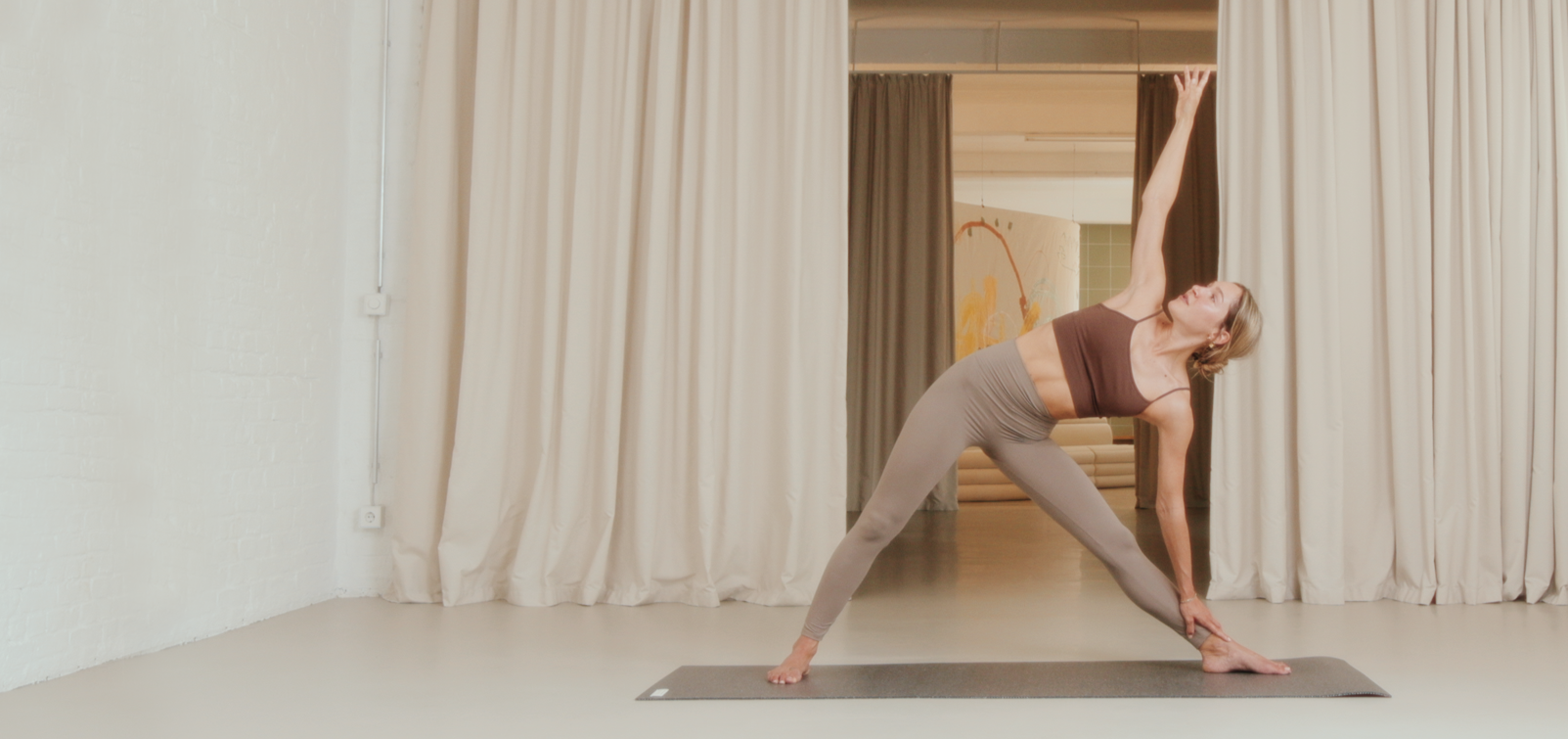We are very proud to give you such a valuable article about yoga for people with disabilities by Lena Braun to read. It is about much more than people with disabilities, it is also about limitations in general and probably about you. Because not all asanas can be performed by the person. Here you will learn how to best deal with this in your yoga offering or even in a yoga class itself. In addition, Lena explains some of them to you from a scientific point of view. We too are once again enchanted by the healing effects of yoga. Enjoy reading and learning!
My name is Lena, I am a physiotherapist and have specialised in the field of neuro-orthopaedics. This means that I work mainly with children and adults who have congenital or acquired neurological diseases. For me, yoga forms a foundation for my therapeutic practice. I teach yoga in 1:1 settings and in small groups and am always fascinated by what participants report about the effect of the combination of movement, breathing and focus. That’s why I want to talk about how to make yoga accessible to everyone. Take away fears and encourage creativity in yoga practice.
What does yoga mean for me
Looking at yoga from the outside, it’s a lot about physical movement. By now, however, many should have understood that it’s about more than just finding the perfect pose. Hand on heart, it’s hard to keep your mind on your own mat and accept your own movements without constant evaluation, isn’t it? In the process, the actual idea of yoga is quickly lost.
How does all this work if you can’t move the way you want to in the first place? If I cannot control my body how I want to? What happens in yoga if I am not able to constantly change my body position? Can I do yoga at all if I can’t get out of my wheelchair for the downfard-facing dog? From this perspective, yoga does not seem particularly accessible.
It’s about much more than yoga for people with disabilities
Looking at yoga from the perspective of people with a disability, there are often many hurdles before joining a yoga class in a studio. Apart from the rare accessibility of entrances, classrooms or changing rooms, yoga teachers often do not have enough experience to integrate people with physical disabilities into their classes. This often leads to insecurity on the part of both teachers and students. I would like to add at this point that I think that not only people with concrete movement restrictions have inhibitions about visiting a yoga studio, but also people who do not conform to the “medial yoga norm”. People who are overweight, people who consider themselves unathletic or stiff. People who have fears that an asana will not look perfect even after the third yoga session. Yet we have known for a long time that yoga is about the “inside”, not the “outside”. This article is meant to encourage you to try it out. Yogic philosophy represents a very different truth of yoga practice. Yoga is about you and not about the perfection of the individual positions.

Yoga Philosophy
For me, yoga means trying out new movements. Allow new movements and step out of your comfort zone. Everyone has their own movement comfort zone. It doesn’t matter if you feel awkward, if you have a condition that restricts your movement, or if fears and negative experiences prevent you from moving. Every person has had different experiences of movement in their life, every person has different anatomical conditions. This means that everyone has a different starting level.
What everyone has is the potential to try new movements, to learn new things out of their comfort zone. And this is not about learning complex, heavy asanas but small movements. That might enable you to perceive breathing better.
Yoga takes the way back. This means yoga goes from coarse to fine and from outside to inside. This principle can be broken down to movement. Instead of having a big movement in your head that is visible to everyone on the outside, it is about making small movements perceptible to yourself. For example, noticing the movement of your breath, feeling the movement of your shoulders and hips.
The next step is to simply allow the movement, without constantly evaluating it, without thinking about it too much. Our brain does not think about each movement step individually. The brain sees a movement goal, has a motivation, a drive to achieve it and performs the action. Instead of just trying it out, we keep slowing ourselves down with thoughts like: “I can’t do that”; “I’ve never done that before”, etc. This does not build trust in our own bodies.
New movements are unfamiliar at first, just as new actions, places or attitudes can be unsettling at first. But if I always stick to my usual movement patterns, my brain doesn’t get any input to try new things.
In order for a movement to be executed correctly, attention needs to be paid to the movement itself. If my mind is on the next shopping trip or watching my neighbour on his yoga mat, I can safely assume that I cannot concentrate on my movement, let alone my breathing, at the same time.
From a medical point of view
Yoga offers many positive effects for people with disabilities, i.e. physical limitations or neurological diseases.
Gothe et al. 2019 compiled a review of the current literature on the topic of yoga effects on brain health. They were able to work out that yoga can have an influence on the function of various brain structures. E.g. on the activity of the prefrontal cortex. This receives sensory signals and plays a role in directed attention and in the organisation of complex actions. In addition, yoga can have an impact on the hippocampus. This is where memory formation and spatial orientation take place, among other things. Neurogenesis also takes place in the hippocampus throughout life. This means that new nerve cells are formed here. A 12-week yoga practice (3x per week for 60 minutes) led to an improvement in mood and a reduction in anxiety in the subjects. The reason for this is the increase of the neurotransmitter GABA in the thalamus (cf. Streeter el a. 2010).

Yoga as therapy
Through the combination of meditation, breathing and physical movement, yoga can help us increase awareness and thus the organisation of complex action. Therapeutically, these skills are needed to learn new movements and integrate new sequences of action. People with disabilities often have reduced physical awareness. This means that they would not be able to tell, for example, what position their foot or hand is in with their eyes closed. Or whether you are just touching the big toe or the back of the foot. It is a physiological reaction that our brain blocks out areas of the body that we do not use often. According to the motto “use it or lose it”. If the body area is not very present in the brain, perception is reduced at the same time. Incidentally, this also happens to people with chronic pain syndromes. Patients with longstanding back pain also have reduced awareness of the back and surrounding muscles. A kind of protective mechanism of the brain so that the perception of pain is not so present all the time. Conversely, this also means that some movement orders of a yoga asana are not received by the participants. Because they often do not have the perception for it. This often happens, for example, when aligning the pelvis during an asana. Many participants find it difficult to move the pelvis in isolation. This is why yoga teachers learn to adjust with their hands during their training. This is nothing more than giving the participants a little more input and thus perception to take up the body position.
Many people have difficulties perceiving their body correctly and thus implementing movements. Not only people with concrete physical limitations or disabilities. Everyone needs some form of adjustment to the yoga asanas. Because every body looks different and is perceived individually from the inside out.
It is important to practice the movement that my body can do on a daily basis. Only what I use is stored in my brain. I can fall back on that.
Especially for people with physical disabilities, it is important to maintain the aspects of movement that are possible for them. Because it is often mobility that enables them to be independent and participate in everyday life.
Yoga for people with disabilities or limitations
As yoga goes beyond a purely physical practice, it offers an ideal foundation especially for people with movement difficulties. Because the mindset, the attitude toward one’s own body are enormously important. Learning to perceive your own body, to accept it as it is and to feel your breathing. To feel that you yourself are in control. This is not about controlling complex asanas. The first step is to control breathing. To learn that you yourself have an influence on your breathing and your breathing in turn influences your thoughts. Without constantly evaluating what and how I do something.
Being permanently dependent on a wheelchair often means not having the possibility to change the body position at will. The limitation of movement often comes from the disease itself. Breathing and thus the movement of the diaphragm can already feel like an increase in movement for those affected. Movement experience always brings information about the body and the positions of the joints to the brain. Here they are processed and with the help of this information movements can be adjusted or initiated. If this sensory pathway to the brain only delivers part of the information, the perception of one’s own movements can be faulty. For example, the arm may feel stretched when in fact it is not. The back can feel erect and straight, even though it is not. Adjustments or a visual check is very helpful.
Asanas for everybody
Not every body is able to perform all yoga asanas. In yoga, asanas are built up from “bottom to top” and increased from “easy to complex”. If you stick to this pattern, you can integrate people with different movement problems. From the bottom up means that there is a solid base on which to build. In standing positions these are the feet. For people who cannot stand and sit instead, it would be the pelvis (ischial tuberosity). Once this basis is given, other qualities of movement can be added. Conscious breathing targeted arm movements can then be added.
Another principle for adapting asanas is to move from movements far from the body to movements close to the body or torso. Often these movements are easier to implement for people with physical limitations. If I have participants in the class who do not have a free range of movement in their arms, I can initiate the movement through the shoulders.
Sthira sukham asanam
In verse 2.46 of the Yoga Sutra Patanjali describes: “Sthira sukham asanam”. It can be translated as: “A posture should be stable and comfortable.” These two aspects, perhaps opposites for some, must be united. Stability is achieved through a stable foundation of movement. The pleasant feeling comes from concentrating on the breathing. So it’s not about assuming complex positions, but going into the postures in which I manage to continue breathing in a relaxed way and directing my concentration to that alone.
Effects of the asanas
Forward bend
As a yoga teacher, you should always be aware of the qualities, and the energetic effect of the asana you want to practice. Take the forward bends, for example. Bending forward in yoga stands for surrender and letting go. Whether the forward bend is practised from standing or sitting does not change the quality of the asana. Surrender and letting go is independent of the starting position. But perhaps tools such as a yoga block or yoga bolster are needed so that participants can let themselves sink forward in confidence. Bringing the chin to the chest and letting the head hang relaxed, relaxing the jaw and tongue can already be a maximum forward bend, depending on the movement restriction.

Standing postures
Standing positions are associated with the first chakra. They demand support, security and stability. Some yogis need to be led up to Warrior III to feel that they need to build balance. For others, it may be sufficient to tilt the upper body far forward, to the right or to the left while sitting on a chair. In both variations the first chakra is addressed, the energetic quality does not change. The balance system and stabilising muscles become active to maintain balance. The feeling of grounding becomes noticeable.

Warrior I
Using Warrior I (Virabhadrasana A) as an example, I would like to briefly explain how you can make an asana accessible to everyone. Let us first take the principle “from the bottom up”. A stable basis must be in place. Whether standing, sitting, leaning against the wall is not important here. The pelvis is aligned forward, and the knees and feet both point forward, regardless of the starting position. The upper body is erected on this stable foundation. The hands are in Namaste in front of the chest. Inhaling stretch the arms towards the ceiling. The principle “from close to the body to far from the body” can now help you to make further adjustments. If it is not possible to stretch the arms (far from the body), the hands remain in front of the chest (close to the body). Movements away from the body are often more difficult to stabilise, it takes more muscle strength and coordination to perform such movements. Length is created with the inhalation, regardless of whether the hands pull towards the ceiling or, in the variation, the head grows towards the ceiling as the highest point. The feeling of grounding, the activation of mula bandha, the breath flowing through the body does not depend on how high the arms go towards the ceiling. The energetic effect of Warrior I remains noticeable regardless of the starting position and variation of the asana.

Warrior II
In thought we change from Virabhandrasana A to B. Let’s start again from the bottom up. The basic position of the feet and hips changes. The front foot points forward, the back foot is positioned at an angle of about 45°, the hips are thus parallel to the long edge of the mat. The alternative to standing freely is, for example, sitting on a chair. If possible, sit sideways to align the hips parallel. One hand can be used to hold on to the back of the chair. If it is not possible to change the hip position, the stable seat, e.g. in a wheelchair, forms the basis for the further development of the asana. Close to the body, make sure that Mula Bandha is active and the pelvis is tilted in such a way that there is no hollow back. The upper body is long and straight. The arms are stretched out to the sides at shoulder height. If the arms cannot be lifted, the shoulder girdle as a point close to the body is an alternative. Inhalation is followed by concentration on the length in the arms. Alternatively, focus on widening the chest during inhalation.
The aim is to make the energetic effect perceptible for the practitioners. Through physical movement it is often easier to convey these feelings, but sometimes it is also the ideas or thoughts that help us to make this energetic effect tangible.
Sun salutation
The Sun Salutation with the flow of forward bends, backbends and inversion postures also has different qualities that can be practised on a chair or against the wall. Creativity, confidence and courage help you to adapt the flows. The basics such as the alignment of the asanas should not be overthrown, however, because it forms the basis for being able to instruct gradations. Variations are made through a different starting position (sitting on the chair or floor, leaning against a wall) and the principle “from close to the body to far from the body”.
For yoga people with disabilities or neurological diseases, it is especially important to provide precise guidance. The movement goal must be clearly formulated in order to give the person concerned security in their movement. It is important for movement planning in the brain that the movements can be imagined. So the goal should not be overwhelming, but should evoke the right inner motivation. To reinforce sensory input, it is helpful to adjust to give a sense of movement. Without a movement goal, without motivation and input, there is no movement planning in the brain and people with physical disabilities in particular have difficulty carrying out the action.
Implementation in practice
Of course, it is not an easy task to build up a yoga session in such a way that every level of movement is achieved with similar intensity. Beginners’ courses should be structured and taught in such a way that really everyone has the chance to participate. A 1:1 session at the beginning of the yoga practice always provides a good introduction. Teachers and students get to know each other, and variations to individual asanas can be discussed and thus more easily implemented in the regular classes. The physical limitations of movement should be openly discussed so that possible asana variations are feasible and suitable, and do not overtax and demotivate. This creates trust and security within a yoga class. Therefore, trusting communication between teachers and students is essential.
It is important to teach the basics of yoga practice and to focus ideas and expectations on one’s own inner core. Slowly increase movement and breathing and offer the opportunity to get to know yourself. As a yoga teacher, you create the foundation and safety for people to learn new movements, connect with the breath and reach a different energetic level. Because it is not only the possibilities of physical movement that are worked on, but also new beliefs. New connection with oneself, a new perception of one’s own body. And the realisation that breathing and thoughts have an influence on our movement and, conversely, that movement influences breathing and thoughts. Independent of physical movement possibilities.
ana.akazi is my heart’s project, which is currently developing little by little. The idea was to give people with different movement problems access to yoga. Making yoga tangible for all. At the moment we are working on yoga cards with different asana variations. To practice at home or as a collection of ideas for yoga teachers.
I am happy to encourage you to make yoga accessible to all.
Thank you Lena for your valuable information and detailed writing in this article!
Making the yoga practice accessible to all is very close to our hearts. We have another blog article about barrier-free yoga by Katja Sandschneider that might also be of interest to you. She talks about her so inspiring path and how she found her yoga path. If you would like to do yoga with her yourself online, take a look at our Youtube channel: Sun Salutation on the Chair (german).
Foto Credits: Isabel Winckler





